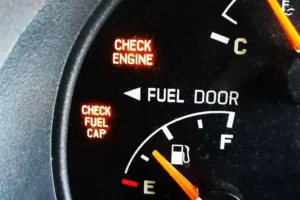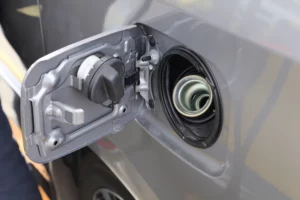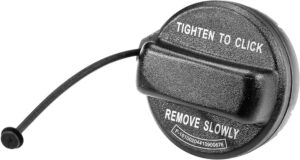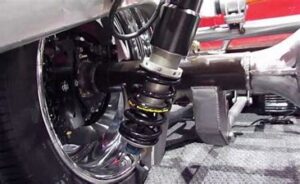When you travel every day in your dependable Honda CR-V, there’s one little but important element that you frequently overlook: the fuel cap. In the broad scheme of things, the gasoline cap on your Honda CR-V may seem like a small part, but by taking the time to routinely inspect and make sure it’s in good shape, you can greatly improve your driving experience. The gasoline cap acts as a barrier to keep dangerous substances out of your car’s fuel system and maintain its effectiveness.
In simple words, it’s the unsung hero that maintains your engine operating at peak efficiency and reduces fuel usage. This article will help you understand why the “Check Fuel Cap on Honda CRV” message is important for preserving the health of your vehicle and making sure that every trip is as trouble-free as possible, rather than merely being a standard task. Let’s examine the significance of this sometimes disregarded part and discover the benefits of including it regularly in your vehicle maintenance regimen.
Table of Contents
Understanding The “Check Fuel Cap On Honda CRV” Message In Detail
The simple reminder to “Check Fuel Cap on Honda CR-V” may not seem like much, but it is crucial for protecting your car’s essential components. Let’s take a closer look at its definition. Like any other car, your Honda CR-V has a gasoline cap that covers the fuel tank. By acting as a barrier of defence, this lid keeps the fuel inside pure and uncontaminated. It keeps everything safe and secure, much like a gas tank cover on your car. When you notice “Check Fuel Cap,” it’s a friendly reminder to make sure this cap is firmly in place. Why does this matter? To prevent leaks, imagine it like making sure your water bottle is securely secured.

Similar to this, an appropriately sealed fuel cap keeps dangerous materials out of the gasoline system. Problems may arise if the gasoline cap is missing, broken, or unsecured. It may cause a warning light to illuminate on your dashboard, signalling a possible issue. Maintaining the performance and fuel efficiency of your Honda CR-V starts with making sure the fuel cap is tightened. This is a little but important step. Thus, when you see this warning, check and tighten the fuel cap; your car will appreciate it when you drive!
Common Causes Of Fuel Cap Issues In Honda CRV: Unraveling The Mystery
Although your Honda CR-V is a dependable car, problems can still arise in even the most dependable cars. The gasoline cap is one important yet frequently disregarded component. Gaining insight into the typical reasons behind gasoline cap problems will help you drive worry-free.
1. Wear And Tear:
Wear and tear is one of the main causes of fuel cap issues. The rubber seal on the cap may deteriorate with time and lose its capacity to form an adequate seal. The vehicle’s natural aging process as well as exposure to different weather conditions can cause this wear and tear. Potential problems may arise when the seal weakens and is unable to keep the fuel tank under the required pressure.

2. Damage Incurred By The Fuel Cap:
Your fuel cap is not invulnerable to accidents; they do happen. Physical impairments like dents or cracks in the cap may make it less effective at sealing the gasoline tank. A little dent can provide enough of a breach for dangerous materials to get inside the tank, which will reduce fuel efficiency and performance.
3. Neglecting To Adjust The Cap:
It’s normal to overlook little things in the hustle of daily life, such as tightening the gasoline cap after refilling. This omission, though, could have serious repercussions. Fuel vapours may escape from a cap that is loosely fitting or incorrectly tightened, setting off the check engine light. It’s a straightforward error that could have complicated consequences.
4. Inaccurate Or Missing Fuel Cap:
Occasionally, the gasoline cap may completely disappear or be mistakenly replaced. A bad seal from utilizing a cap that doesn’t fit the manufacturer’s specs might lead to problems with the fuel system. A missing cap also puts the engine’s performance in danger by exposing the gasoline tank to impurities.

Therefore, even though the gasoline cap on your Honda CR-V might seem like a little part, it plays a big part in keeping the fuel system operating properly. Fuel cap problems are frequently caused by breakage, wear & tear, forgetting to tighten, and using the incorrect cap. Your Honda CR-V will operate well on every trip if you perform routine maintenance and take quick care of any problems. This will prevent you from experiencing unplanned car problems.
Solutions To Ensure Your Honda CR-V’s Fuel Cap Is A-Okay
It’s not difficult to maintain the gasoline cap on your Honda CR-V. Problems that could interfere with your pleasant rides can be avoided with a few easy fixes. Now let’s look at some doable strategies for maintaining the best possible condition for your fuel cap.
1. Getting The Fuel Cap Tight:
Most of the time, a loose gasoline cap is the source of the issue. Make sure you tighten it tightly after refuelling. A loose cap might interfere with your car’s operation and cause warning lights to come on. Hence, giving it a little twist after filling up might help you avoid unwanted problems.

2. Visual Inspections Regularly:
Examine your gasoline cap visually now and then, just like you would before leaving the house. Check for wear, cracks, or other indications of damage. It’s preferable to take care of anything strange as soon as you see it rather than waiting for a bothersome warning light to come on.
3. Substitution When Required:
A fuel cap can deteriorate with time; it is not indestructible. During regular visual inspections, if you find noticeable wear or damage, you should think about replacing it. Replacing a cap usually costs less than the problems it could create if left unchecked.
4. Conscientious Refueling:
Sometimes, handling the cap while refilling matters more than the cap itself. Do not expedite this process. Once filled, take time to make sure the top is securely fastened. Rushing could result in poor sealing, which could cause problems later.

5. Examine The Gaskets And Seals:
The rubber gaskets and seals on the fuel cap are essential for keeping the gasoline tank sealed. Check these parts frequently for wear or damage. Compared to possible fuel system difficulties, replacing any flaws you find is a cheap expenditure.
Therefore, keeping the fuel cap on your Honda CR-V clean just requires forming a few wise practices. After refuelling, tighten it, check for wear and tear, and replace it as needed. By following these easy actions, you can maintain the optimal condition of your fuel system and drive with confidence. Keep in mind that little things frequently have the biggest long-term effects. Give your Honda CR-V’s gasoline cap a little care the next time you’re at the gas station, and your vehicle will repay you with dependable and effective performance on the open road.
Conclusion:
In conclusion, watching the gasoline cap on your Honda CR-V is important for the health of your vehicle and goes beyond just being a regular chore. If you ignore it, you risk annoying warning lights, reduced fuel economy, and potential environmental damage. You can guarantee a trouble-free voyage by comprehending the causes and implementing easy fixes. Thus, give your Honda CR-V the smooth, effective operation it deserves by tightening the cap and doing routine inspections. You’ll find that driving your cherished CR-V is safer, more cost-effective, and better with just a little effort that pays off greatly.
![You are currently viewing Check Fuel Cap On Honda CRV [Explained In Detail]](https://hydraulicsuspension.com/wp-content/uploads/2023/12/Check-Fuel-Cap-On-Honda-CRV.jpg)


